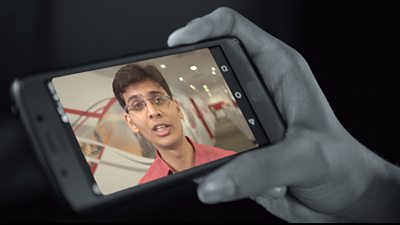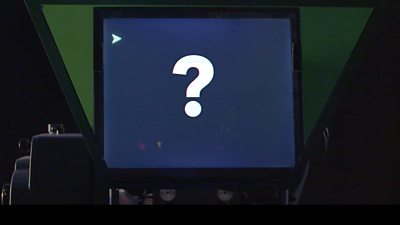���˿��� Young Reporter India is a media education project adapted for regional relevance, from the successful UK scheme. So far 50 trainers have reached 8000 students in 120 schools across India. India is a particularly challenging market for disinformation. Sharing misleading content on messaging apps is widespread.
We have created a series of workshops and presentations, of varying lengths, along with videos, and delivery notes to help you deliver programmes to students, to help young people meet these challenges.
The programme is aimed at students from grades 9-12, but suitable for older students, up to 18 years old. They can be delivered by teachers or trainers.
These workshops and films will help your students think critically about the information and news they receive on their social media feeds. They will be encouraged to think twice before sharing potentially misleading content, and be given tools to help them verify images and videos.
Our aim is to build a community of students, schools and teachers who will be able to sift facts from the fake and understand online information better.
- ���˿��� Young Reporter India reportDownload our report to read how the project was delivered.
Workshops
We have a selection of videos of various lengths that can easily be fitted into your teaching timetable – from 20 minutes to 2 hours. The choice is yours. You can find the ���˿���’s child protection guidelines for delivery below.
For Teachers and Trainers
Here is a short introduction to ���˿��� Young Reporter India.
Workshops
We have created 6 short and simple 20-30 minute workshops that take students through the basics of recognising and verifying misleading information.
They will understand the potential harms, and learn to think critically about the information they see in their feeds. Critically it will help to encourage them to pause before sharing – playing their role in preventing the sharing of fake news.
- 1. Introduction to 'fake news' (linked video)5 MB PowerPoint presentation
- 1. Introduction to 'fake news' (includes large embedded video)2.31 GB PowerPoint presentation
- 2. Tools to check fact from fake (linked video)2.9 MB PowerPoint presentation
- 2. Tools to check fact from fake (includes large embedded video)1.71 GB PowerPoint presentation
- 3. Who to trust (linked video)1.6 MB PowerPoint presentation
- 3. Who to trust (includes large embedded video)1.72 GB PowerPoint presentation
- 4. Tricks of the trade4.6 MB PowerPoint presentation
- 5. Techie tools (linked video)5.4 MB PowerPoint presentation
- 5. Techie tools (includes large embedded video)187 MB PowerPoint presentation
- 6. Safe skills for life1.7 MB PowerPoint presentation
For trainers who are already familiar with the programme and who will only deliver one session to a group of students, we have two longer workshops (1 hour and 2 hours) which have already been delivered to 8000 students across India
Videos
 What is fake news? (Hindi)What are the motives behind generating fake news?
What is fake news? (Hindi)What are the motives behind generating fake news? What and who to trust? (Hindi)What are some of the signs to not trust a person or organisation sending you information?
What and who to trust? (Hindi)What are some of the signs to not trust a person or organisation sending you information? Identifying 'fake news' - how to do some quick checks (Hindi)How to identify fake news and do some quick checks before sharing news and information.
Identifying 'fake news' - how to do some quick checks (Hindi)How to identify fake news and do some quick checks before sharing news and information. Checking the Story (Hindi)How you can check the truth behind the story.
Checking the Story (Hindi)How you can check the truth behind the story. A super hero gives top tips to avoid sharing misinformation on WhatsApp to Indian language audiences.
A super hero gives top tips to avoid sharing misinformation on WhatsApp to Indian language audiences.
Assembly topics and slides
- 1. Data and numbers (linked video)1.7 MB PowerPoint presentation
- 1. Data and numbers (includes large embedded video)95 MB PowerPoint presentation
- 2. Pictures24 MB PowerPoint presentation
- 3. Social Media (linked video)2.5 MB PowerPoint presentation
- 3. Social Media (includes embedded video)110 MB PowerPoint presentation
- 4. Fact and Opinion (linked video)102 MB PowerPoint presentation
- 4. Fact and Opinion (includes embedded video)2.7 MB PowerPoint presentation
Interactive Game
- ���˿��� iReporter���˿��� iReporter is a fun game that will put your students in the heart of the ���˿��� news room and help them to check facts and sources.
Other resources
- Online courses, toolkits and resources designed to help journalists and the public build expertise and stay one step ahead of misinformation.
- Checks dubious stories and identifies fake news
- Charts the spread of Tweets and bots
- Checks a Twitter account, it's followers and friends to see if they are bots
- Checks images for inconsistencies that occur when a photo has been altered
- Fact check results from the web
- YouTube verification tool from Amnesty International
- Online video clip search and verification
- Assess the date & location through shadows.
- Similar to above - assess the date & location through shadows.
- Identify hills, skylines and mountain ranges
- Similar to above - Identify hills, skylines and mountain ranges
- Guide to verifying digital content for emergency coverage
- Multi-engine reverse image search
